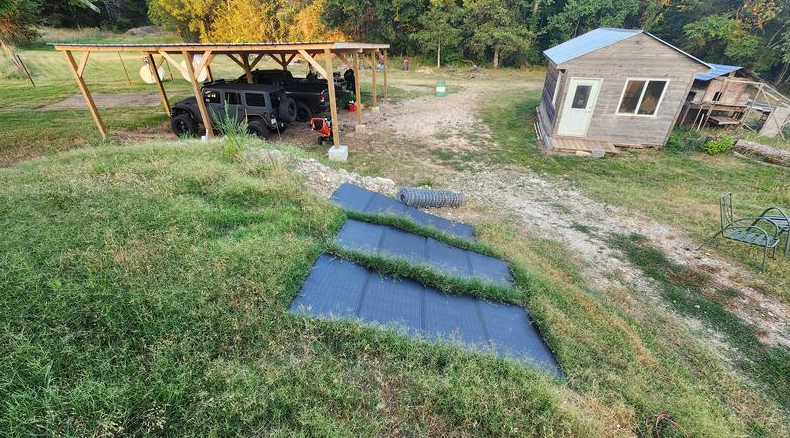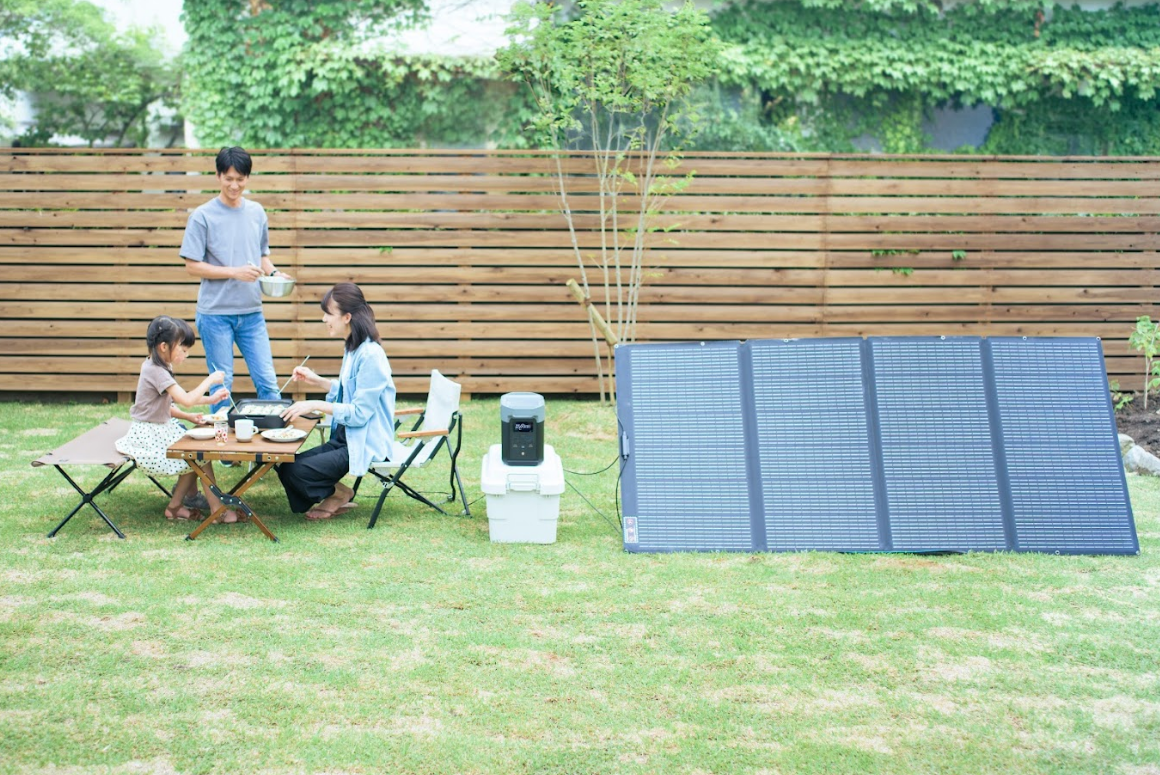U.S. Community SoU.S. Community Solar Expansion: Top States and What's Next
- What Is Community Solar and How Does It Work?
- Primary Advantages of Community Solar
- Where Community Solar Is Expanding the Fastest
- What Prevents Community Solar in Other States?
- Future Opportunities and Market Outlook
- Frequently Asked Questions About Community Solar
- Conclusion: Community Solar Deserves to Be in the Limelight
Community solar is increasingly one of the easiest and best ways to receive clean energy in the United States. It makes it possible for families that cannot or do not wish to put up solar panels to utilize renewable energy. With more individuals desiring low-cost and flexible solar options, state legislation and improved collaboration with utility providers are making community solar available to more individuals.
While rooftop solar is always an option for homeowners, it's generally out of reach for renters, inhabitants of multi-unit buildings, and owners of shaded roofs. Community solar is bridging that gap. From a niche option, an industry is taking shape, with forecasts calling for several more gigawatts worth of capacity in the next five years.
What Is Community Solar and How Does It Work?
Community solar specializes in bringing together solar farms to supply electricity back to the grid. Individuals can purchase or rent a share of the system's energy rather than installing their own solar panels. They then get credited for the energy, which takes away from their electric bill.
A Simplified Breakdown:
- The solar farm is owned and operated by a solar developer or utility.
- Homes and companies pay for utilizing a portion of the system.
- The energy is fed into the local power grid.
- Subscribers are awarded credits for the quantity of energy they help generate.
No rooftop mounting translates to fewer logistical issues. Renters, apartment dwellers, or homeowners with roofs that are unsuitable for solar panels can all join in without altering their property.
Primary Advantages of Community Solar
Community solar is accessible and flexible, so it is an excellent means to provide equitable energy use. You don't require property ownership or the purchase of high-cost equipment to reap the benefits, unlike conventional solar systems.
Why It Matters:
- Roof-Free Access: Most ideal for renters and multifamily residents.
- Guaranteed Savings: Most schemes guarantee a discount—typically 5% to 15%—on electricity bills.
- Energy Resilience: These systems help keep the power grid stable using batteries.
- Policy Alignment: Assists states in achieving goals of renewable energy and access for individuals with varying incomes.
That's why community solar is taking a more leading role in state climate action plans, particularly those that seek to reduce energy burdens in underserved communities.


Where Community Solar Is Expanding the Fastest
Community solar is not expanding equally. Certain states are moving faster than others, thanks to favorable legislation, grid connectivity, and consumer outreach. Following is a brief summary of where it's taking hold:
| State | Key Programs & Policies | Market Highlights |
| New York | NY-Sun Initiative; Consolidated Billing Structure | Surpassed 1 GW capacity in 2025; hundreds of active projects |
| Minnesota | Value of Solar Tariff; Open Market Model | Home to one of the oldest, most stable community solar programs |
| Illinois | Climate and Equitable Jobs Act (CEJA); Adjustable Block Program | Aggressive growth, with emphasis on low-income participation |
| Colorado | Clean Energy Plan; Utilities require solar gardens | Projects are more often found in city and country areas |
| California | Net Billing Tariff Pilot; Equity-Driven Deployment | Slower rollout, but gaining momentum in disadvantaged communities |
What Prevents Community Solar in Other States?
Despite its promise, community solar faces challenges in much of the country. Some states lack policies that explicitly enable development. Others are set back by utility opposition or a lack of public awareness.
Major Issues:
- Absence of virtual net metering laws
- Difficult or expensive methods of linking
- Standardized billing or crediting mechanisms are lacking
- Few attempts to inform the public
In territories where utilities have great sway, third-party developers may find it hard to get connected or to be paid reasonably. Projects, then, become harder to finance—and the projects never come to the attention of many customers.
Future Opportunities and Market Outlook
Community solar is set for a revolutionary period, driven by enhanced incentives, improved technology, and growing customer interest. The Inflation Reduction Act (IRA) has given the sector a shot in the arm by offering significant tax credits and grants to support underserved communities.
What's on the Horizon:
- Virtual Power Plants (VPPs): Batteries integrated with solar farms can store and supply energy during periods of high demand.
- Smarter Billing Platforms: Streamlined software makes it easier to enroll customers, track usage, and issue accurate credits.
- Regional Projects: Some developers are bringing in multi-utility and multi-state systems in areas that share common transmission infrastructure.
- Rural Integration: Heightened federal and local investment is helping to broaden access to rural agricultural communities and remote towns.
Industry projections suggest that the U.S. will have tripled its capacity of community solar in just a few years. Declining solar costs, growing participation model flexibility, and continued policy backing are all fueling this momentum.


Frequently Asked Questions About Community Solar
Q1. Can I join a community solar program if I'm a renter or have an apartment?
Yes. Community solar is wonderful since it benefits renters and apartment dwellers. If you reside within the same utility territory as the solar farm and there is availability, you can enroll. You do not have to own your home, install panels, or make any changes to your property. This makes it very simple for a lot of individuals, particularly those who have traditionally been excluded from the solar conversation.
Q2. How much money will I save with community solar?
Most customers can expect to save between 5% and 15% on their electricity bills. The real savings depend on your energy usage and program terms, but various community solar models offer guaranteed or fixed discounts that won't increase over time. Unlike variable utility rates, your bill credits provide a more predictable monthly expense. The best part? You start saving the moment your subscription is activated—no upfront investment or equipment purchase is required.
Q3. Is this available in my state?
As of 2025, community solar exists in more than 20 states, although how it works really differs significantly among states. A few states, such as New York and Minnesota, have robust programs already underway. Other states may just have pilot projects or recently passed laws. The best approach is to contact your state energy office or utility. If there is no community solar in your state yet, new policy initiatives may be on the horizon.
Q4. Do I need to commit to a long-term contract?
Contract durations differ by provider. Some let you pay month to month, and others require one- to five-year commitments. Don't skip the fine print, particularly for cancellation charges, price increases, or exit policies. The bad news is that some providers require long commitments and charge high early-cancellation fees. The good news is that most reputable programs have straightforward terms with no surprises, and some even let you transfer your subscription if you relocate within the same service area.
Q5. How do I know if a provider is trustworthy?
Choose providers that are part of your state's official program or sanctioned by the public utility commission. Reputable companies will be transparent about their pricing, offer straightforward contracts, and have friendly customer service. You can also review customer ratings and reviews from the Better Business Bureau. If you'd like a portable backup to complement your community solar participation, EcoFlow offers panels from 45W to 400W with up to 25% efficiency and IP68 waterproof ratings. These lightweight, easy-to-use units start at just $99 and are perfect for outdoor and emergency applications.
Conclusion: Community Solar Deserves to Be in the Limelight
Community solar is no longer an ancillary solution—it's a prime driver of equal access to clean energy. Due to smart policy, strong technology platforms, and increasing consumer awareness, it's quickly becoming a vital piece of America's energy future. For individuals who cannot or prefer not to install rooftop panels on their residence, community solar opens up the door to genuine energy savings and participation in the clean energy revolution. As we proceed into a future characterized by climate change and energy price hikes, this model provides an affordable, scalable, and equitable way forward. The takeaway is clear: community solar isn't just gaining traction—it's gaining momentum. And it deserves a mainstage seat at the table of energy access, environmental stewardship, and household savings for millions of Americans.